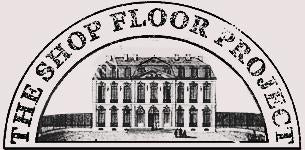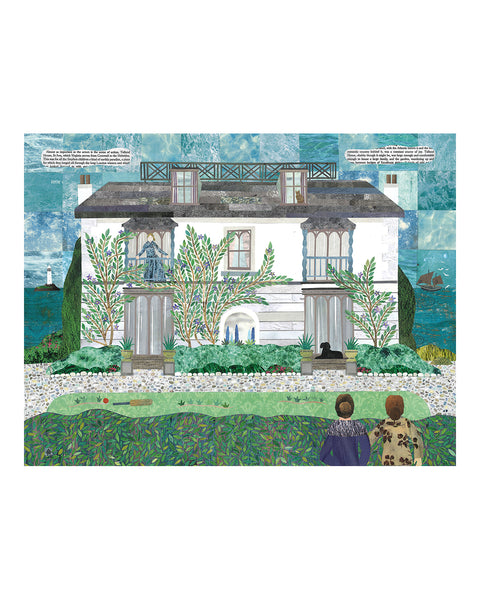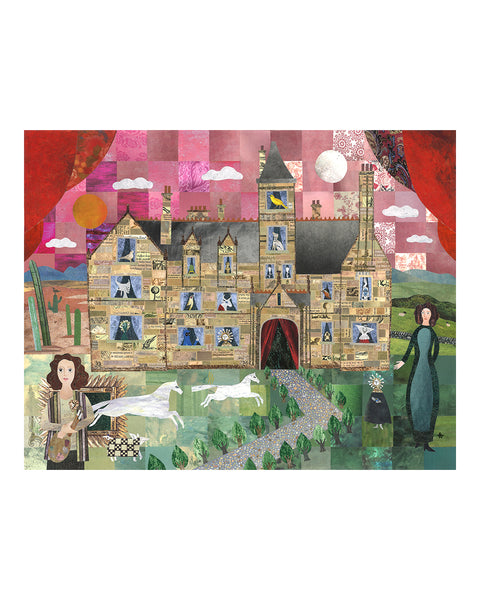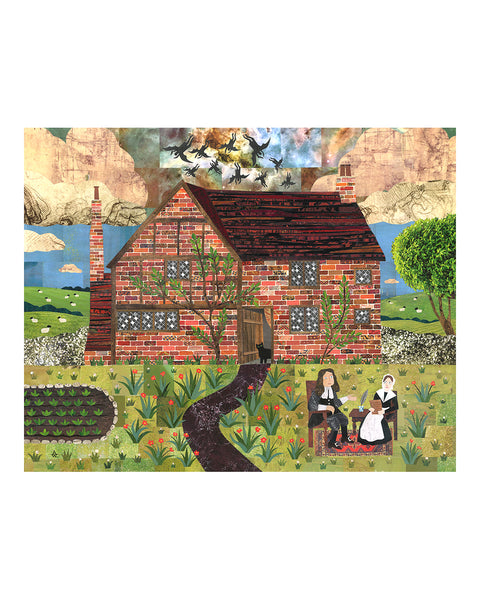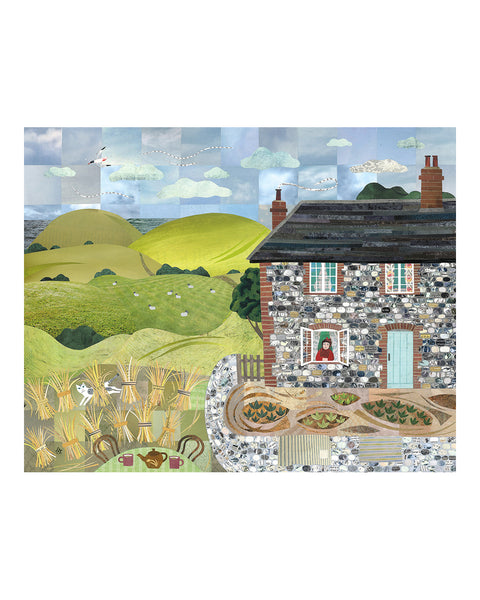
Product Details
Description: Crookhey Hall, Lancashire (childhood home of the Leonora Carrington): an original, one-off paper-cut collage work by Amanda White.
Unframed size approx: 49 x 38.5cm (19.3 x 15.2 inches)
Framed size approx: 62.8 x 52.3cm (24.7 x 20.6 inches)
Date of Artwork: 2025
Location of Signature: Bottom right and on reverse
Frame options: Black Wood with mount, Oak with mount, White Wood with mount, Putty Wood with mount
Please note: Our framers are recognised by the Fine Art Trade Guild for their quality because the custom frames have tightly pinned corners, and are made from precision cut wood in England, made bespoke for each order. All our frames are glazed with our Clarity+ Perspex. It's cut from the highest quality acrylic sheet that's both crystal clear, but also safe and filters out 99% of UV light to protect the artwork.
Read more about our FRAMING WORKSHOP here
THE HOUSE MUSEUM
In Leonora Carrington's Childhood (Crookhey Hall, Lancashire), Amanda visits Crookhey Hall in Lancashire and creates a magnificently rich and detailed piece. This Gothic-revival mansion was home to the Surrealist artist Leonora Carrington until the age of ten and the house appears repeatedly in Carrington’s artwork throughout her lifetime.
Leonora Carrington was a pioneer, rejecting high society and the debutante lifestyle laid out for her. She escaped to art school, then onto Paris to live with Max Ernst and eventually settled in Mexico where she created her masterpieces.
In Amanda White’s collage of Crookhey Hall a magical scene unfolds. Horses galloping across the lawns, a pebble path leading to a mysterious front door with red curtains and strange characters from Leonora Carrington’s paintings peer out of the windows and stand quietly in the grounds. Beyond the house, the English countryside turns into the Mexican desert and hot pink sky where the artist found a home.
THE STORY
This new collection includes eight large-scale paper cut collages which, like a doll's house, invite you to peer into and explore - with a temptation to move the figures and play!

Paper-cut artist Amanda White is celebrated for her intricate collages of historical houses that once belonged to writers and artists. Originally trained as a theatre designer, Amanda carries this love of stage sets into her collaged worlds, each one appearing as though the curtains have just opened and a scene is unfolding.

A chance encounter with a pile of vintage Vogue magazines, found on the street, led Amanda to start working with the paper-cut technique. What else is an artist and theatre designer to do when confronted with such bounty? The rest is history and Amanda has now been working with paper-cut collages for many years. Her work has been exhibited in the UK, Spain and New York with pieces held in many private collections around the world and in institutions such as the Rutherston Collection, Manchester City Art Gallery and the Hogg Robinson Group.

Amanda begins each new work with a deep dive into the subject, sketching compositions, researching the history and stories about the house and the people who visited. This research informs all of the details and materials that Amanda will gather before she starts her incredibly detailed paper cuts.

Now using a multitude of different papers, collected over the years from old magazines (the National Geographic being a favourite), Amanda also uses old prints, posters, drawings - anything and everything is collected, cut up and carefully filed into categories and subjects including ‘masonry’ and ‘sky’ so they are easily ready for use when inspiration strikes.

As a member of the Association of British Naive Artists it is no surprise that Amanda White’s influences are deeply folk art orientated. Asked for a list of inspiration, Amanda sent a list that reads as a love letter to that very specific English aesthetic: “I have a love of Staffordshire pottery, old textiles and plates, gardens, broadsheet woodcuts, William Blake, Alfred Wallis, Eric Ravilious, Edward Bawden, the Romantic movement, browsing in books, mooching in museums, Sussex, old buildings, cats, the sea”.
